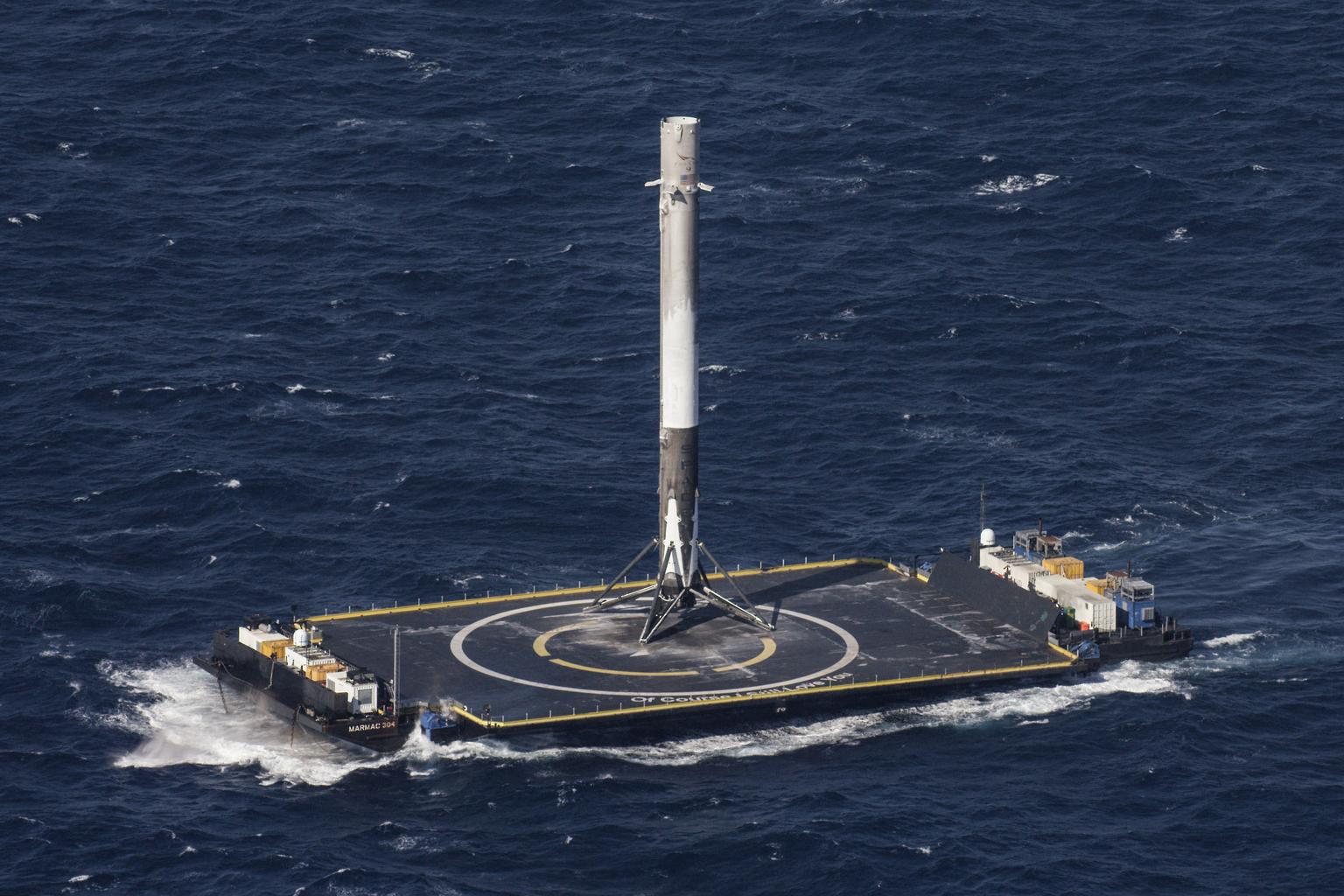
The company is hiring "offshore operations engineers" to develop the launch and landing platforms.
SpaceX's Mars-colonizing missions may not launch from terra firma.
Elon Musk's space company is hiring "offshore operations engineers" to help develop floating spaceports for Starship, its next-gen transportation system designed to take people to and from the moon, Mars and anywhere on Earth they want to go.
"SpaceX is building floating, superheavy-class spaceports for Mars, moon & hypersonic travel around Earth," Musk said via Twitter Tuesday (June 16), in response to a tweet that drew attention to the SpaceX hiring notice.
The sea-based spaceport plan by itself is not new; SpaceX has long talked about this possibility. For example, Starship animations Musk unveiled in 2017 depict the giant rocket-spaceship duo (then known as the BFR) launching from an offshore platform. And earlier this month, Musk tweeted that SpaceX is considering three launch sites for its first Starship missions: Florida's Space Coast; the South Texas facility, near the village of Boca Chica, where Starship prototypes are currently being built and tested; and offshore platforms. (South Texas appears to be in the lead as far as the offshore spaceports go; the SpaceX hiring notice specifies Brownsville as the job site.)
But it is notable that the idea is now mature enough that SpaceX is hiring folks specifically to pull it off.
Musk also revealed some new details about the plan Tuesday. For example, a Twitter user asked if the offshore spaceports will be refurbished oil rigs, and if Starship passengers will be ferried out to them via Hyperloop, the vacuum-pod transportation idea that Musk proposed in 2012. The billionaire entrepreneur responded, "Pretty much."
Musk also said that the offshore spaceports won't exactly hug the coastline.
"We need to be far enough away so as not to bother heavily populated areas. The launch & landing are not subtle. But you could get within a few miles of the spaceport in a boat," he said in another Tuesday tweet.
The landing he referenced is that of Super Heavy, the 31-engine first stage required to get the 100-passenger Starship off Earth's surface. Super Heavy will come back down to Earth for a vertical touchdown shortly after liftoff, the way first-stage boosters of SpaceX's Falcon 9 and Falcon Heavy rockets do now.
The Starship spacecraft will sport six engines of its own and be powerful enough to launch itself off the moon and Mars, both of which have much weaker gravitational pulls than Earth, Musk has said. (The engines for both Starship and Super Heavy will be Raptors, which are more powerful than the Merlins that propel the Falcon 9 and Falcon Heavy.)
Starship would not be the first rocket to launch from an ocean platform. The company Sea Launch conducted three dozen liftoffs of Zenit boosters from a specially built ship, the last occurring in 2014.
"Directionally correct, but Zenit is an order of magnitude smaller than Starship system & doesn't come back & land," Musk tweeted Tuesday, responding to a Twitter user who cited the Sea Launch precedent.
The offshore engineers will add to an already bustling atmosphere in South Texas, where Starship prototypes are rapidly being assembled and tested. On Monday (June 15), for example, SpaceX pressure-tested a Starship propellant tank to destruction, in a trial designed to inform future designs of the spacecraft.
"Tank didn't burst, but leaked at 7.6 bar. This is a good result & supports idea of 304L stainless [steel] being better than 301. We're developing our own alloy to take this even further. Leak before burst is highly desirable," Musk tweeted on Monday.
To date, just one Starship prototype has gotten off the ground: a stubby, single-engine craft called Starhopper, which made a few short test flights last year before being retired. But SpaceX is gearing up for an uncrewed test flight that will take the SN5 ("Serial No. 5") prototype about 500 feet (150 meters) into the South Texas skies, if all goes according to plan.
The SN4 prototype had been in line to make this flight, but it exploded shortly after an engine test on May 29.
If development goes well, we could see the first operational Starship missions - likely launches of commercial communications satellites - sometime next year, SpaceX representatives have said.



Ingen kommentarer:
Legg inn en kommentar
Merk: Bare medlemmer av denne bloggen kan legge inn en kommentar.